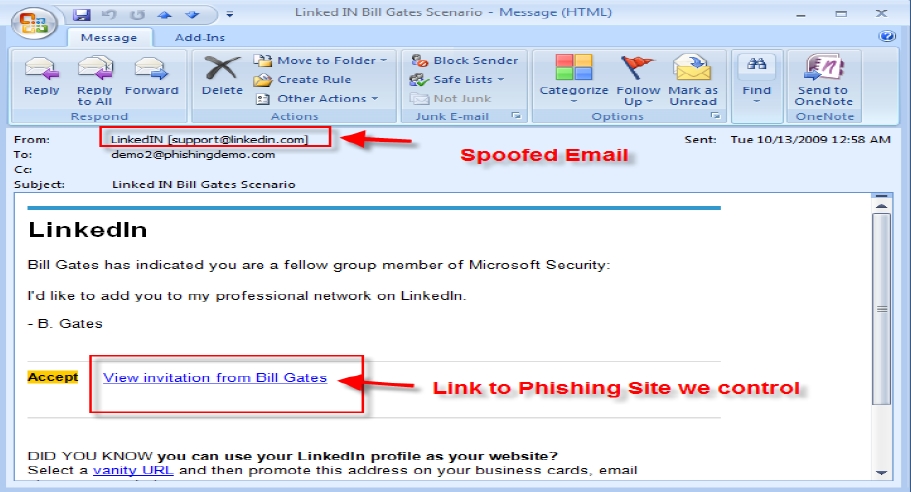Phishing experiment sneaks through all anti-spam filters

The experiment emphasizes on how small-scale spear phishing campaigns are capable of bypassing anti-spam filters, and once again proves that users continue interacting with phishing emails.
More info on the methodology used:
"This scenario was an invitation from Linkedin, posing as an invitation from Bill Gates to join his network. Linkedin was selected due to availability, and the fact that it is a social network recognized by most executives. This selection of Linkedin was also based on the fact that linked-in email should be already identified by most existing email system(s), and this may have helped delivery through into the mailbox. The phishing link can be identified in the HTML source code below.
The Phishing site was based on the Linkedin sign in page. The form action was changed so that the user would be redirected to a subsequent page on our site. No usernames or passwords were collected during this assessment. All targeted users were contacted before the phishing email was sent, and were expecting a Linkedin invitation from Bill Gates."
- Go through related posts: 419 scammers using Dilbert.com; 419 scammers using NYTimes.com 'email this feature'; Fortune 500 companies use of email spoofing countermeasures declining; Gmail, Yahoo and Hotmail systematically abused by spammers
With the average price for a thousand active Gmail, Yahoo Mail and Hotmail accounts decreasing due to the economies of scale achieved by the vendors of CAPTCHA-solving services, and the numerous tools available at the spammer's disposal to take advantage of these accounts, in the long-term all spammers will start abusing the already established DomainKeys trust among the most popular free email service providers.
What's the success rate of spam and phishing emails hitting your inbox? What about your corporate email? Also, do you believe that ethical phishing is most constructive way of building awareness on phishing attacks, or do you think that it drives innovation in the wrong direction by attempting to gather click-through metrics instead of advising users to avoid interacting with such emails in general?
TalkBack.